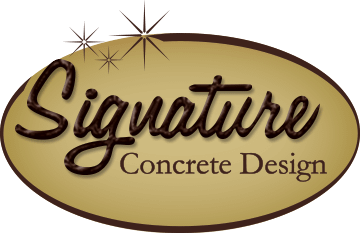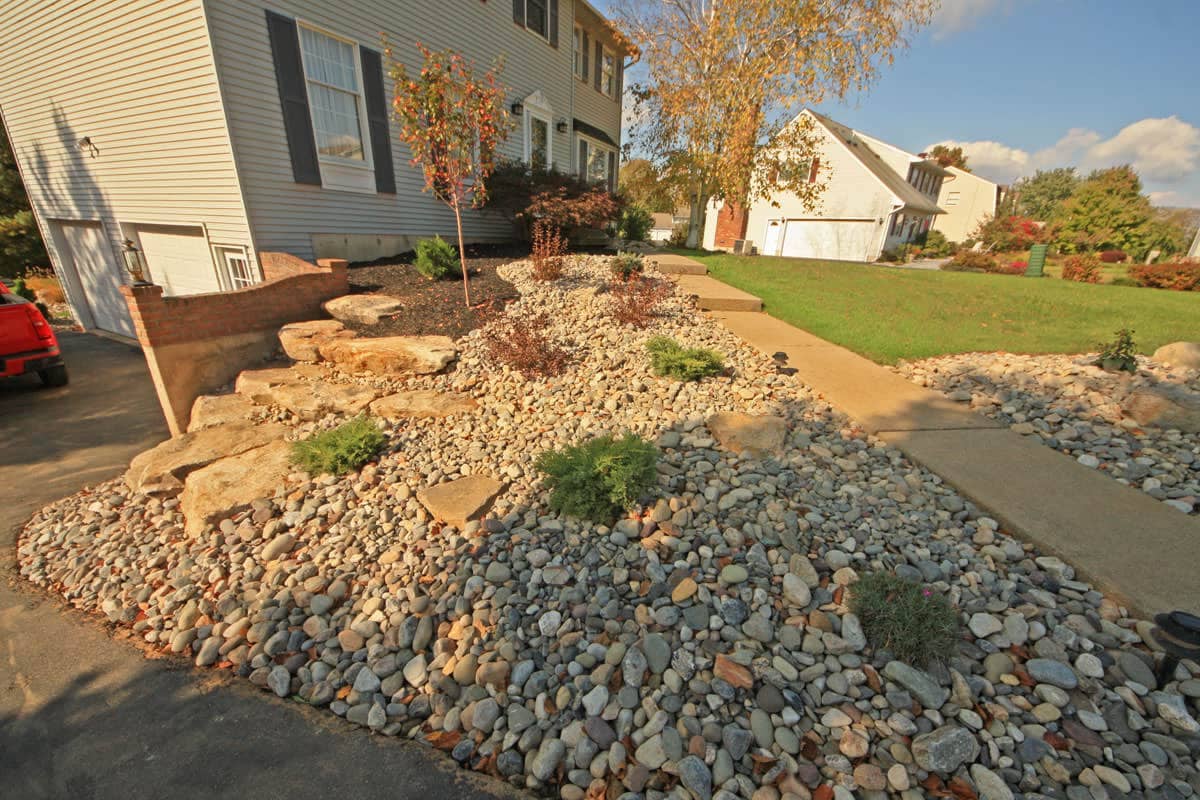


Problem areas in any existing landscape can be troublesome for even the savviest of gardeners and/or do it yourselfers. The size and location of the area, along with the size of rocks or types of weeds come into play when coming up with a final solution. Below are a few areas that give homeowners trouble and some solutions for each.
ROCKY OR BAD SOIL AREAS
Create a lawn: The first option is digging out the rock at least four inches below current grade and replacing with fresh topsoil and seed. Get a seed that is very similar to the current grass that surrounds the trouble area. You may even want to overseed your entire lawn with that same seed to help transition in the area if you think that current grass will not match with the new seed. Again, depending on the area, this may be as simple as using a shovel and wheel barrow or as costly as using large digging equipment.
Create a bed: The second option is to make the area into a raised bed. There are several ways you can go about creating a raised bed but in this particular instance I would create a rock garden. Designing to the natural surroundings can be less time consuming and less expensive. Go ahead and use hand picked rocks from the woods. Get a couple bags of soil, and some rock garden plants and you are set.
WEEDY AREAS
For your lawn: The best solution for a small concentrated area of turf would be to till the area and rake out the weeds. Spread some fresh topsoil, tamp it and spread the seed evenly. Use starting fertilizer and seed accelerator to increase the time it takes for the seed to germinate. Seed the area heavy and over seed your entire lawn with the same type of seed. Chances are this will not be the end of the battle as most weeds are very invasive. The trick to weed control is to keep fighting back. Your next approach should be to use a small handheld weeding tool or use your hands to pull out weeds individually. You can also use an over the counter herbicide as directed on the instructions although; herbicides can very dangerous if not handled properly. Make sure that whatever method you choose it is done continuously. Get yourself a yearly lawn program and stick with the methods that work.
For your planting bed: This will depend on the size of the bed and how many plants are already in there. In some instances you need to just remove some plants because weed roots may be entangled the roots. For beds where plants are spread out and there is room to rake out or handpick weeds then that should be the approach. You can also use a selective herbicide but chances are weeds will just pop back up in the future. Once you get the weeds out then add a woven fabric around the plants and add a mulch or stone. If the current bed already has a thick layer of mulch or stone then you may need to remove some of the existing before laying the fabric.
SHADY AREAS
Shade areas caused by trees: If the shade is cause by trees then create more sunlight by removing them. Remove the tree completely or prune it to allow more sunlight in. If removing to add a lawn area then you will need to have the stump grind down, add a thick layer of topsoil and spread the seed. If removing a tree to add a planting bed then you may not have to grind the stump. The stump may be incorporated into the planting bed plan. Removing trees and grinding a stump can get costly. If you feel that is not the direction you want then the following solution may be for you.
Shade areas caused by buildings and large trees: Create beds using shade loving plants, boulders and decorative stone. We like to incorporate lighter colored decorative stone and plants that have variegated foliage in areas of shade. If the area you are dealing with is larger or it is on a slope then consider using a groundcover that will spread out. There are a lot of nice groundcovers available in our areas that are shade tolerant. If you don’t want to add beds and just want to plant grass then make sure you use a blended grass seed that does well in full shade. Sometimes the packages will be labeled as “dense shade”. These grass seed blends have been designed to do well in these troublesome areas.

Give us a call at 610.923.5073, contact us or stop into our Easton showroom to see what we can create for you.
Contact Us Today View Service Area